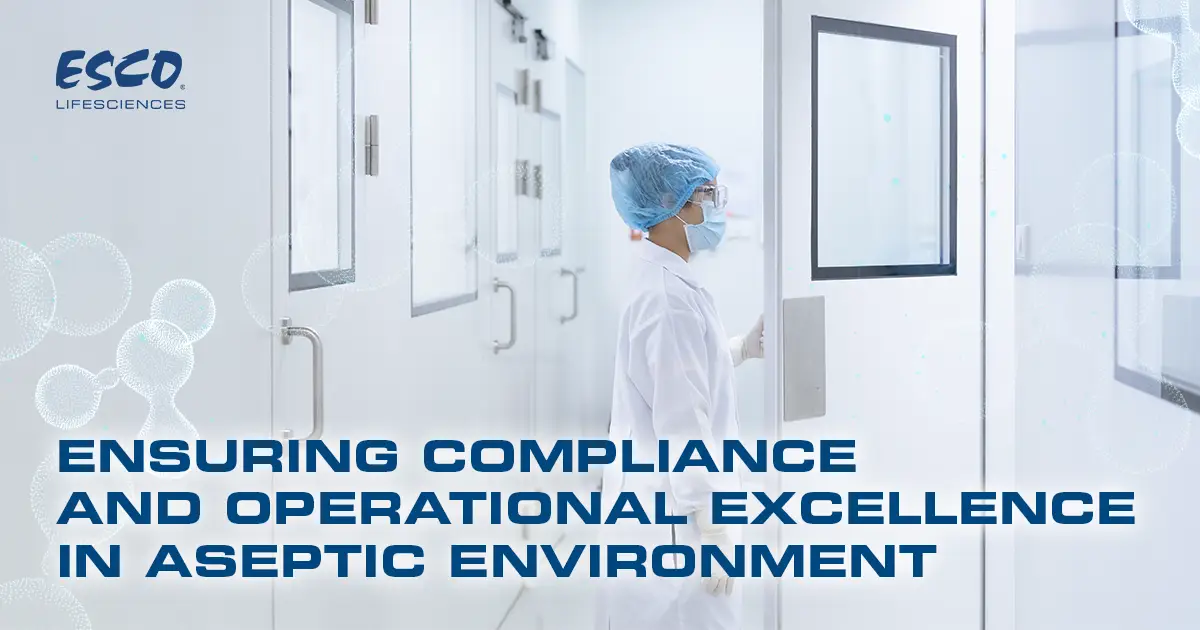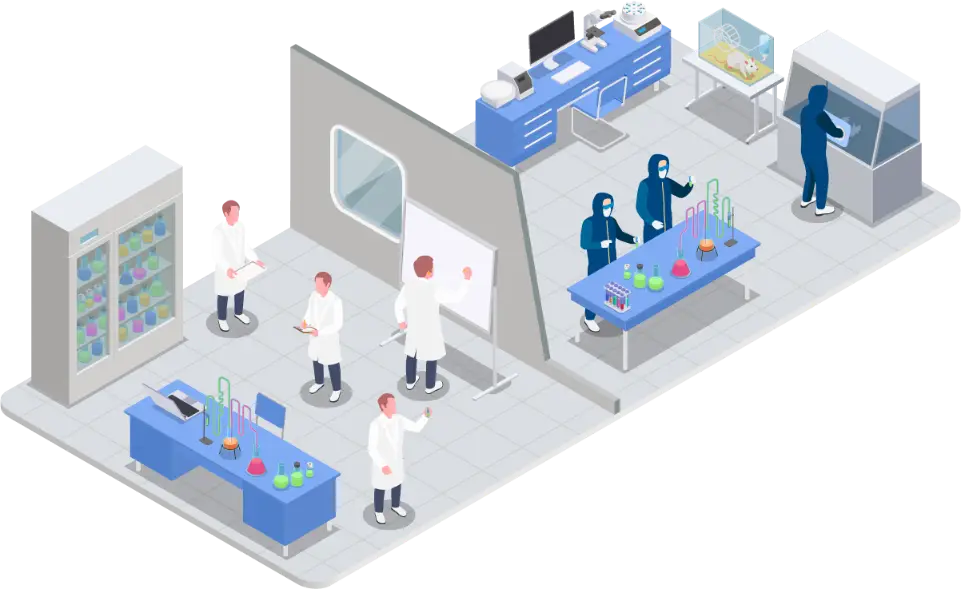Ensuring Compliance and Operational Excellence in Aseptic Environments

Understanding the Roles of Pharmacy Isolators, Biosafety Cabinets, Laminar Flow Cabinets, and Cleanrooms
Controlled environments are important in the pharmaceutical industry to ensure sterility, safety, and compliance. Pharmacy isolators, biosafety cabinets, laminar flow cabinets, and cleanrooms each play distinct roles in achieving these goals, guided by varying functional capabilities and regulatory requirements.
Pharmacy isolators are fully enclosed systems designed for aseptic processing and sterile drug compounding, preventing external contamination and offering high reliability in toxic containment. These isolators adhere to stringent testing protocols, which include pressure testing under ISO 14644-7 and ISO 10648-2 standards, and are often equipped with automated decontamination systems for increased operational efficiency.
Despite also being categorized as Primary Engineering Control (PEC), Biosafety Cabinets (BSCs) and Laminar Flow (LF) cabinets are distinct from pharmacy isolators. BSCs are designed for handling hazardous materials with containment measures for operator and the environment protection, while LF cabinets provide a sterile work surface especially for non-hazardous compounding. These cabinets complement the broader sterile environments provided by isolators and cleanrooms.
On the other hand, cleanrooms which are categorized as Secondary Engineering Controls (SEC) that houses PEC, offer open systems and are designed to meet ISO 14644 standards. Cleanroom classifications and requirements vary based on their intended use, such as sterile or hazardous drug handling, making them versatile yet dependent on systems like isolators.

Determining and Maintaining Cleanrooms, A Collective Effort
Selecting the appropriate cleanroom classification involves assessing compounding activities and risk levels, guided by USP <797> for sterile compounding and USP <800> for hazardous drug handling. Maintaining cleanroom integrity requires stringent protocols, including daily or shift-based cleaning using sterile, lint-free wipes, disposable mops, and disinfectants. Moreover, environmental monitoring, such as particle counting and microbial sampling, ensures compliance with ISO cleanliness standards. For effective cleaning, a top-to-bottom, back-to-front technique should be followed to minimize recontamination. Rotating the disinfectant to prevent microbial resistance is also essential. Additionally, validating HVAC systems, HEPA filters, and maintaining air pressure stability are critical for optimal performance. Comprehensive SOPs for cleaning frequency, procedures, agent selection and routine staff training in aseptic techniques and gowning will further reinforce regulatory compliance and reliability. Pharmacy staff must receive specialized training to operate and maintain clean air technology systems effectively. Certifications in USP <797> and USP <800> compliance are crucial for managing sterile and hazardous drug compounding. Additionally, with aseptic technique training and routine competency evaluations in the mix, personnel are certified to uphold the rigorous standards of pharmaceutical operations.
For optimal performance, BSC and LF cabinets should also undergo regular maintenance, including HEPA filter replacement, airflow validation, and surface decontamination.
Advanced Filtration Systems to Enhance Safety and Performance
Advanced filtration systems, such as High-Efficiency Particulate Air (HEPA) and Ultra-Low Penetration Air (ULPA) filters, significantly improve air quality, capturing up to 99.9995% of particles at 0.3 microns. These systems play a crucial role in meeting ISO classifications and USP standards, particularly in hazardous drug handling under USP <800>.
Filtration systems enhance the safety of pharmacy isolators and cleanrooms by reducing contamination risks, ensuring aseptic conditions and maintaining stable airflow patterns. These will protect both staff and patients from exposure to harmful substances. Regular maintenance and validation of these systems are essential to sustain their efficacy, and this does not only impact the safety of the operator but also the environment.
Cost Implications and ROI of Cleanroom Upgrades
Substantial initial costs are required in cleanroom technology upgrades. Upfront expenses include equipment procurement, installation, maintenance and staff training. However, the long-term benefits can outweigh the investment. Moreover, enhanced compliance reduces the risk of penalties, while more modern systems improve operational and cost efficiency and reduce waste. Below is the illustration comparing an original technology to an upgraded one.
| Costs | ISO Class 7 Buffer Room with (RABS) BSC and LF | ISO Class 8 Buffer Room with Pharmacy Isolator | ||
|---|---|---|---|---|
| ISO Class 7 Room | 2 - Glove CAI (RABS) | ISO Class 8 Room | 2 - Glove Pharmacy Isolator | |
| Setup Costs | $60,000 - $120,000 |
BSC - $10,000 LF - $7,000 |
$30,000 - $60,000 | $70,000 - $200,000 |
| Annual Gowning Supplies | $1,500 - $3,000 | $1,000 - $1,500 | ||
| Certification and Testing | $5,000 - $10,000 | $3,000 - $6,000 | ||
| Maintenance and Environmental Monitoring | $2,500 - $5,000 | $1,500 - $3,000 | ||
| Decontamination |
|
|
||
| Annual Maintenance (Year 2+) | $7,000 - $13,000 | $4,500 - $8,000 | ||
Disclaimer: The pricing estimates provided above are for general guidance only and may vary significantly based on geographic location, specific facility requirements, material choices and vendor pricing. These figures assume typical costs for cleanroom construction, equipment, maintenance and compliance but do not account for potential additional expenses such as custom engineering, utility upgrades, or unique facility needs.
Energy-efficient systems lower utility costs, and advanced containment technologies ensure better yields. These upgrades not only ensure regulatory compliance but also enhance reliability and profitability.
Conclusion and Call to Action
Pharmacy isolators, biosafety cabinets, laminar flow cabinets, and cleanrooms are essential components in maintaining sterile environments and ensuring compliance with stringent pharmaceutical regulations. Advanced filtration systems, maintenance protocols, and staff training ensure these environments perform optimally, which will safeguard safety and operational efficiency.
Investing in advanced technology and adhering to best practices not only increases productivity but also mitigates risks, reduces waste, and promotes long-term profitability. Facilities must assess their operational needs, regulatory requirements, and compounding activities to select and maintain the most appropriate system.
To stay ahead in the pharmaceutical industry, evaluate your facility’s current systems and consider upgrading to advanced cleanroom technology to champion the highest standards for your business! Esco provides a one-stop solution, ensuring compliance and good global reputation to meet your pharmaceutical needs.
For more information, contact us now!